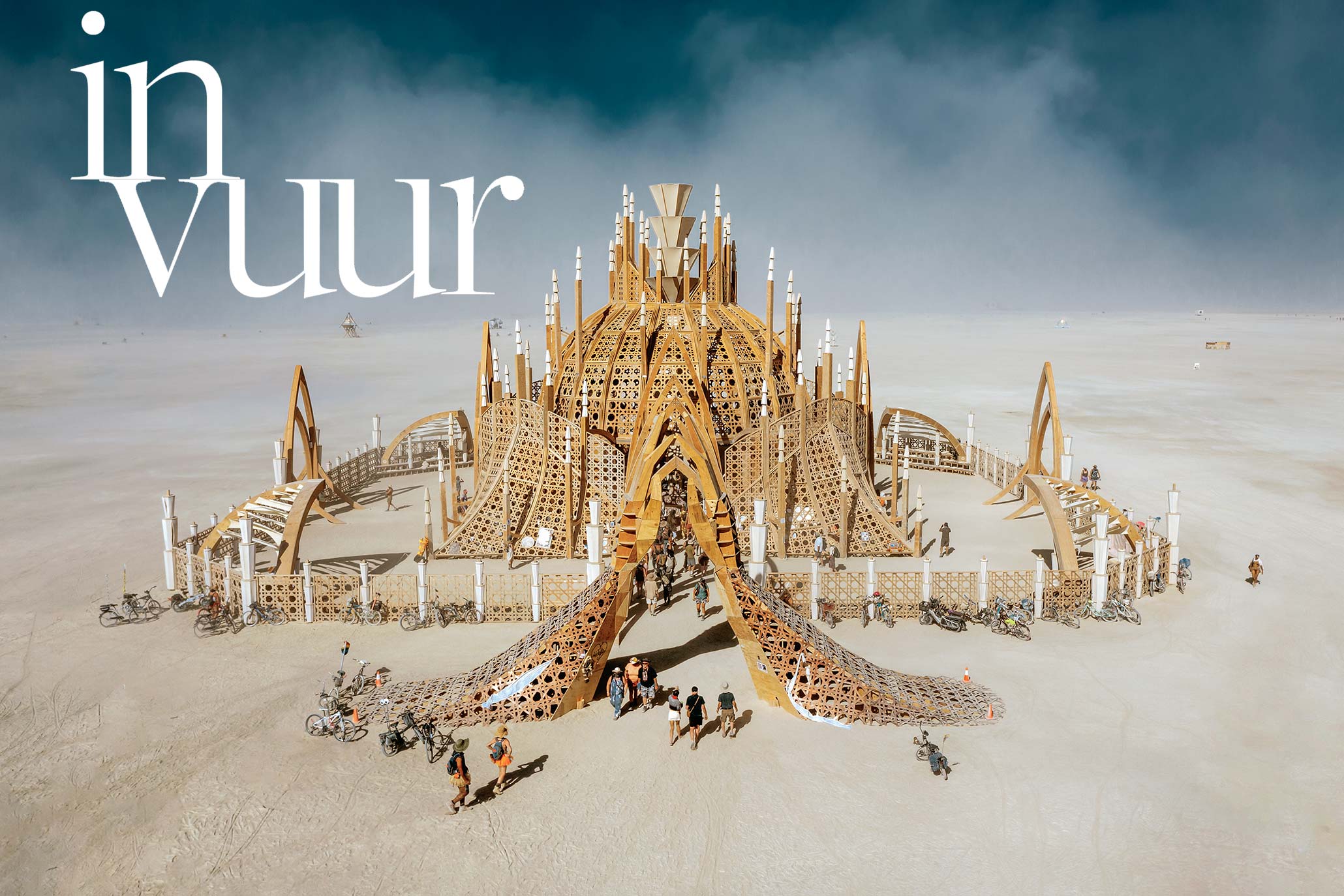Ablaze
“You have to participate, immerse yourself, and get lost in a dust storm. Only then can you begin to experience the true spirit of it.”
A profile of Scott London in the Dutch magazine Linda (August 2025)
Text by Esther Muller
For years, Scott London has been photographing Burning Man, the art and music gathering held in a remote corner of the American West. He describes the event not so much as a festival as a creative convergence in the desert. “You never know what you’re going to experience out there,” he says, “but you can be sure it’ll surprise and amaze you.”
Scott was less than enthusiastic when he made his first trip to Burning Man. “My girlfriend dragged me out there,” he says. “I wasn’t looking forward to it at all. Too many people, too much fuss.” But he remembers being at a loss for words when he first arrived.
“I’m a journalist by profession and I’m usually able to describe what I see around me,” he says. “But at Burning Man, I was dumbfounded. There was no way to describe what I was seeing. All I had was a camera. That was the moment my Burning Man photography project got its start.”
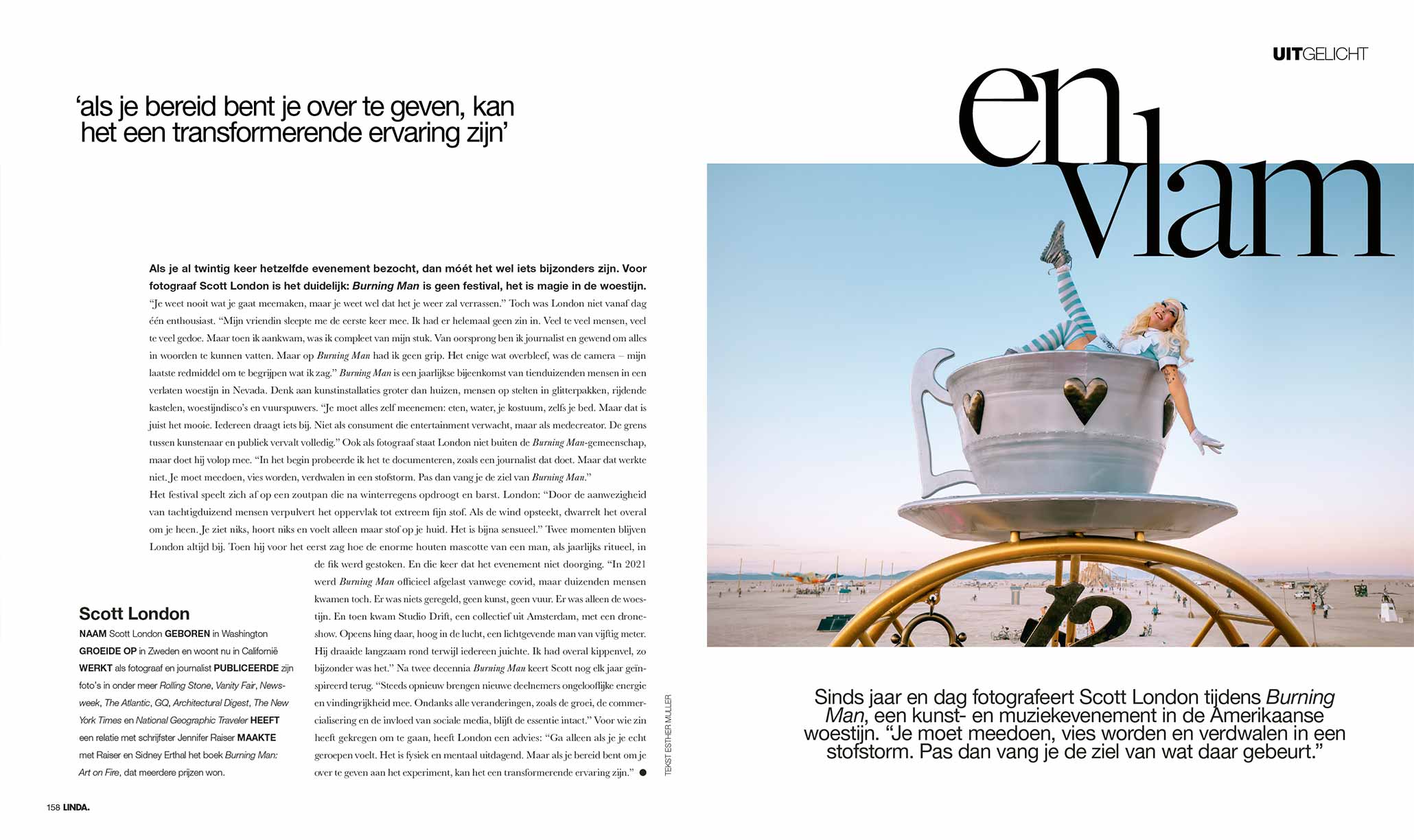
Burning Man is an annual gathering of tens of thousands of people in Nevada’s desolate Black Rock Desert. Think massive art installations, pulsating soundscapes, fire-breathing art cars, and people in outlandish outfits walking around on stilts.
You have to bring everything you need to survive for the week: food, clothing, shelter, and even water. But that’s the beauty of it, Scott says. Everyone contributes something, not as a spectator expecting to be entertained but as a co-creator. At Burning Man, the boundary between artist and spectator dissolves.

As a photographer, Scott resists the temptation to capture the event from the sidelines. He’s a full participant. “Initially, I tried to document it like a journalist,” he says. “But you have to engage with it, immerse yourself, and get lost in a dust storm. Only then can you begin to experience the true spirit of the thing.”
The festival takes place on a lakebed that dries up and cracks after the winter rains. By late summer, the desert floor is hard and chalky, “but the presence of seventy or eighty thousand people pulverizes the surface, turning it into extremely fine dust,” he says. “When the warm winds sweep through, the dust envelops you and moves across your skin like a soft caress. It’s almost sensual.”
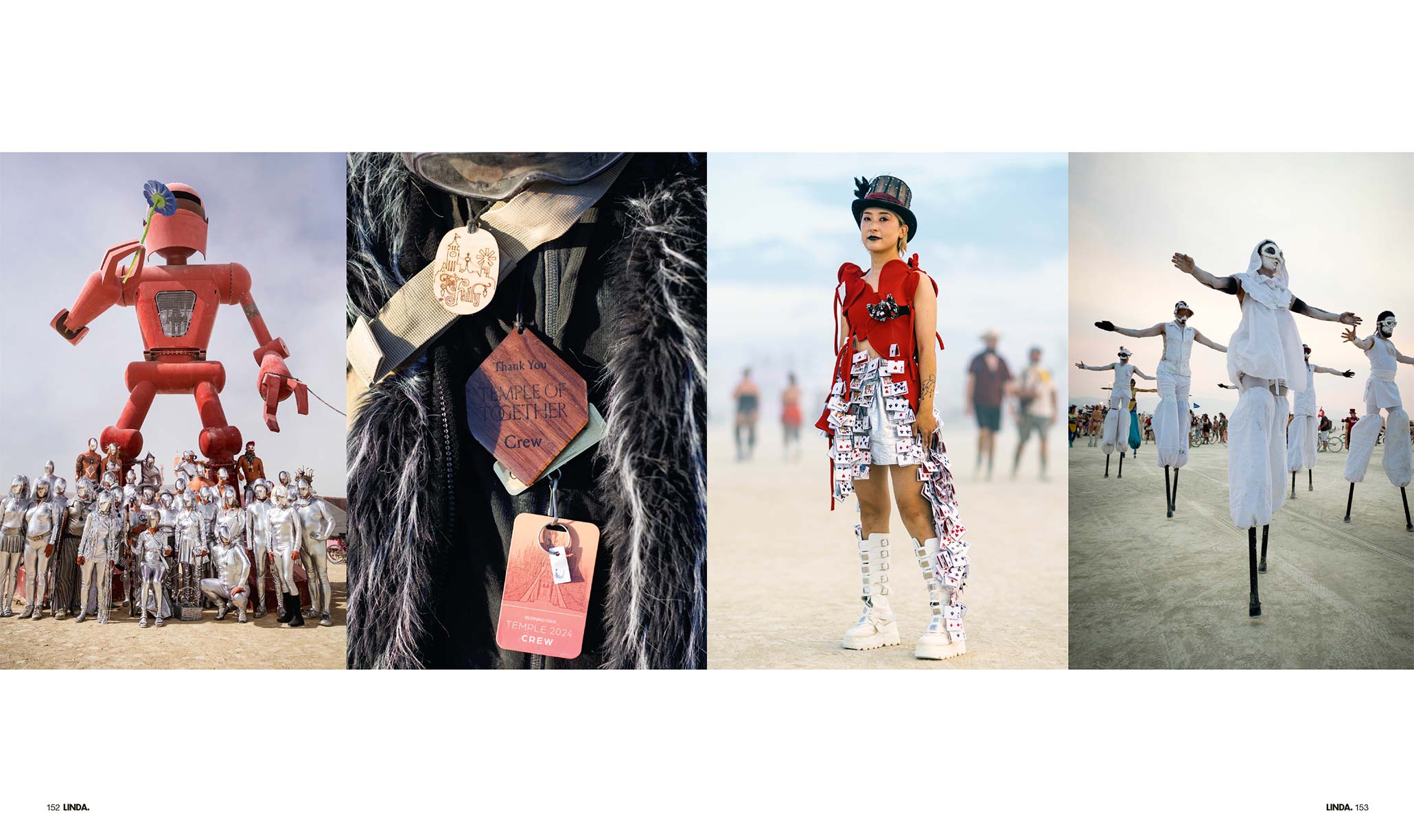
Two experiences always stand out for him: the first time he saw the enormous wooden effigy go up in flames, and the time the event was canceled. “In 2021, Burning Man was officially called off because of Covid, but thousands of people showed up in the desert anyway,” he recalls. “There was nothing arranged — no art, no fire, just the wide-open desert. And then Studio Drift, a collective from Amsterdam, put on a drone show. Suddenly, a luminous man, some fifty meters tall, rose up in the night sky. He twirled around in circles as the crowd went wild. Shivers rose up my spine.”
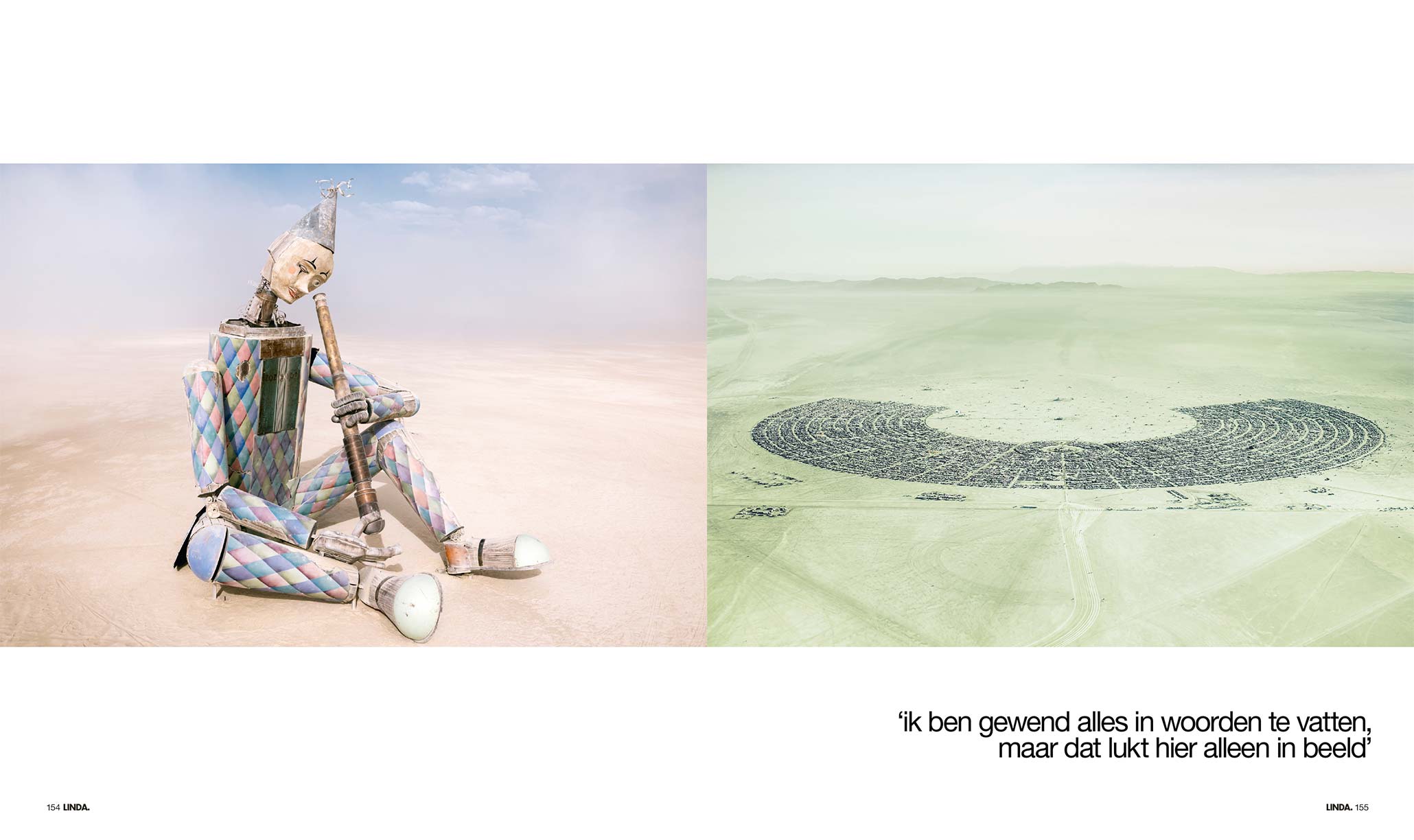
After two decades of attending Burning Man, Scott still returns inspired every year. “New participants always bring incredible energy, talent and ingenuity,” he says. “For all the changes at the event — the surge in attendance, the influence of social media, the arrival of the international jet set — the essential spirit remains intact.”
For those who are inspired to go, Scott has some advice. “Only go if you truly feel called. It’s physically and mentally challenging. But if you’re willing to fully commit and immerse yourself, Burning Man can be a life-changing experience.”
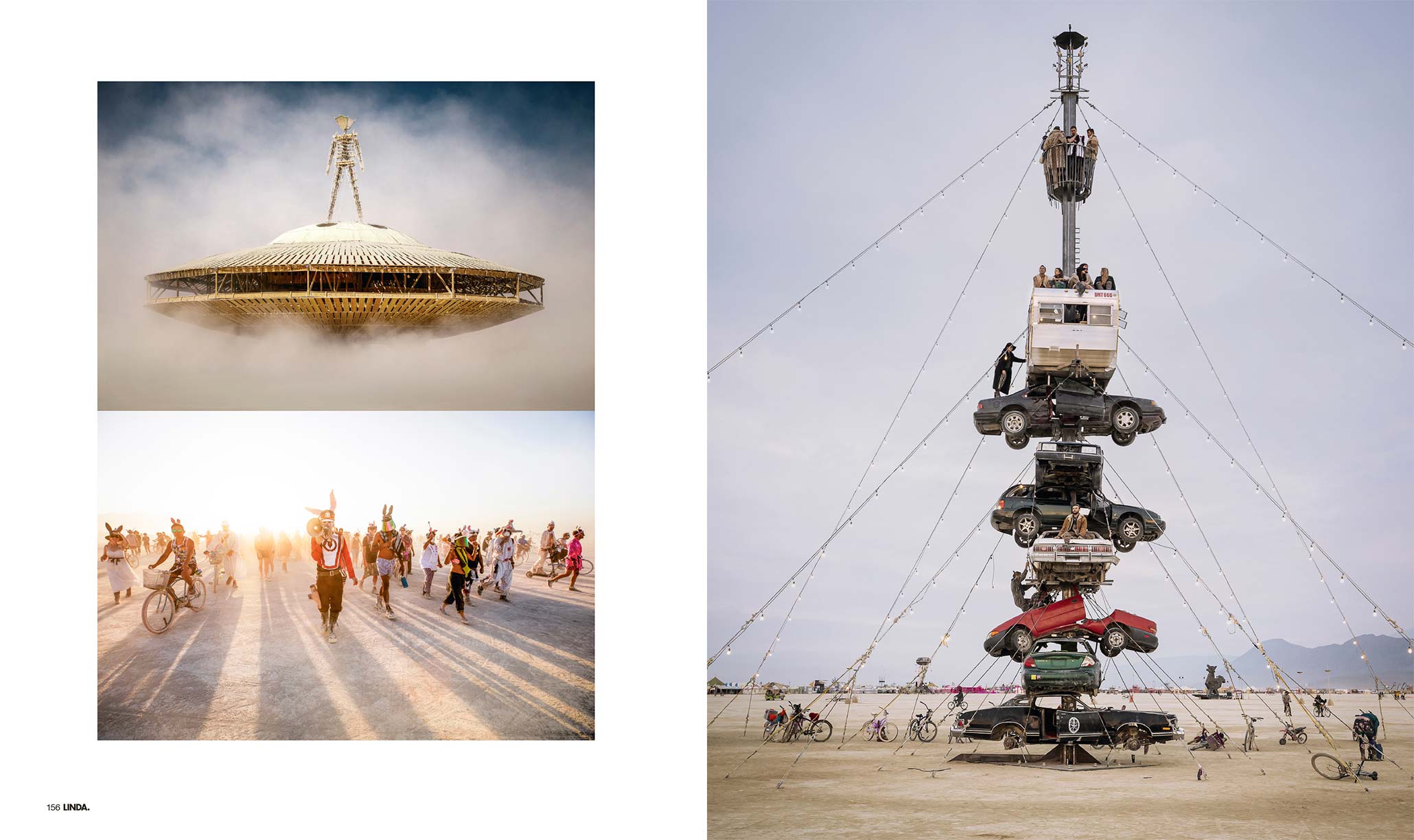
Machine-translated from the Dutch by Google.

